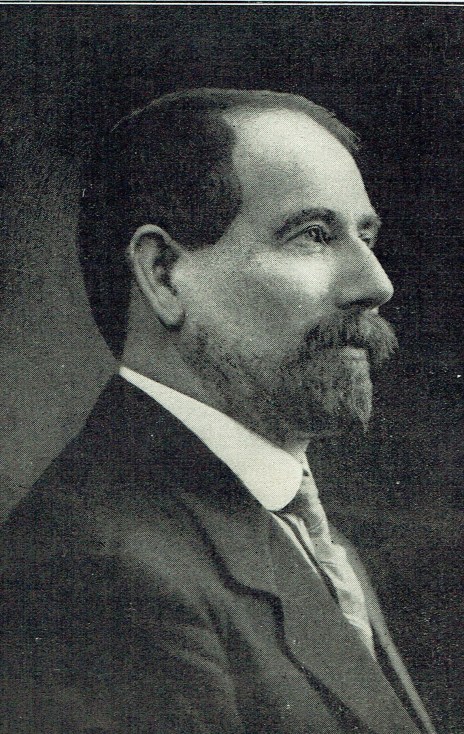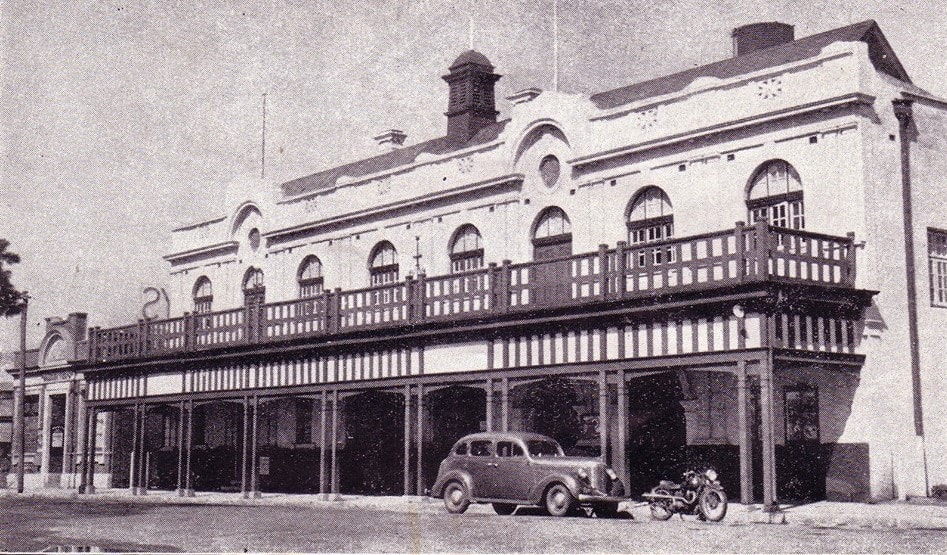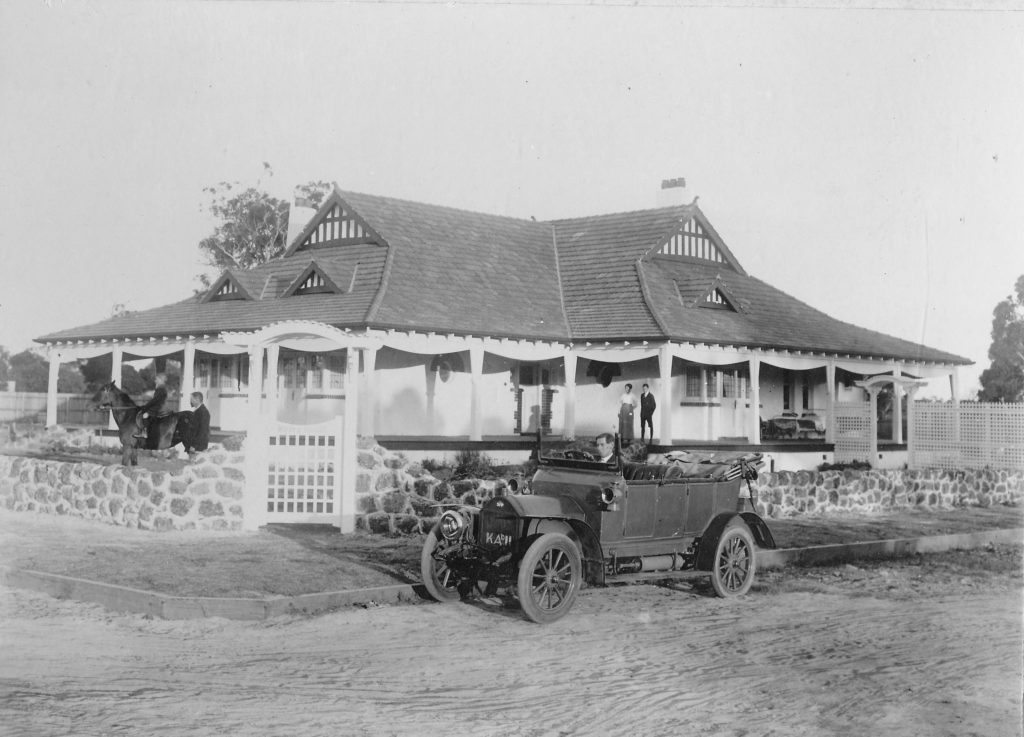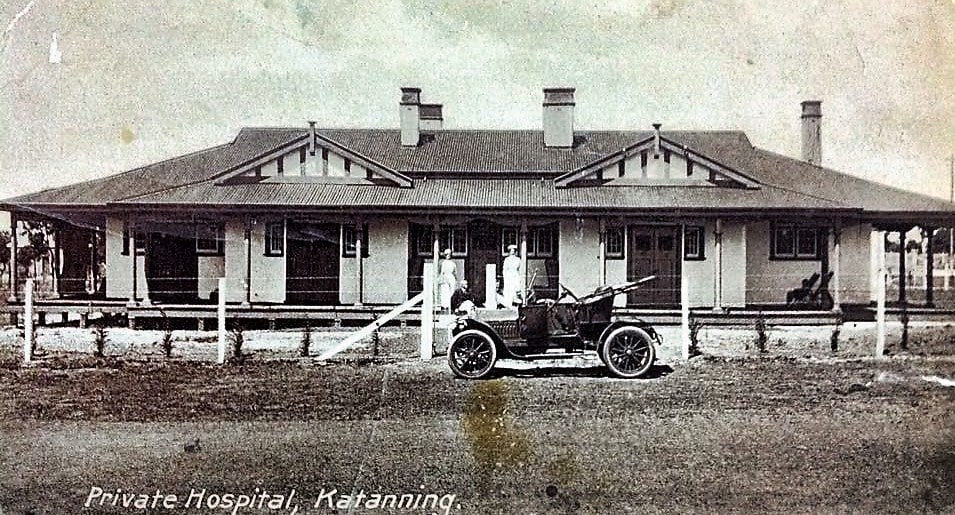Alec Thomson Work. Alec Thomson Work. Alec Thomson Work. Alec Thomson Work. Alec Thomson Work. Alec Thomson Work.
.
Alexander Thomson [2] known as Alec Thomson, was a Western Australian politician, and a member of the Western Australian Legislative Assembly from 1914 until 1930 representing the seat of Katanning, and a member of the Western Australian Legislative Council representing the South Province from 1931 until 1950.
He was also a successful builder, contractor and business man in Katanning where many of his buildings still stand to day.
Alec Thomson
This is his work story in his own words…
Great Southern Herald
31 October 1947
Katanning Branch, W.A. Historical Society.
Paper on Building Progress.
At the recent meeting of the Katanning branch, W.A. Historical Society, its President (Hon A. Thomson, M.L.C.) gave a very interesting account of the progress of building in these districts. As at the time referred to, he was a building contractor, his own work enters largely into the address, giving point to his remarks.
Introducing his subject, Mr Thomson said that before coming to the country districts he had been contracting in Perth and Fremantle for some years, the last buildings erected in the metropolitan area being Tintern Lodge, at the corner of Havelock St. and King’s Park Road, in Perth, and the Davilak Hotel, Fremantle. In 1905, while at Beverley where he was erecting three shops for a Mr Davies, Mr Thomson was requested by the Perth architect, Mr J. H. Eales, for whom he had done a considerable amount of work, to submit a tender for the rebuilding of the Royal Exchange Hotel, the original structure, a timber building, having been destroyed by fire.
Continuing Mr Thomson said: “Thereupon I paid my first visit to Katanning, and was greatly struck with is possibilities. Rogers’ store had just been completed, also the Federal Hotel, for Mr Alf Permine, and the additions to the Katanning Hotel were well under way. I interviewed brickmakers, George Old and Sons, who were also carried, and drew up my estimate which eventually was accepted. Brigdale and Wilkinson, who were working on the Katanning Hotel, asked me to withdraw in their favour, and had they offered me my out-of-pocket expenses I might have agreed.
However, as member of the Buckland Hill Road Board ([2] now Mosman Park) I had attended an annual Road Board Conference at Bridgetown, and there had met Mr. Tom Norrish, of Broomehill, and Mr Elijah Bell, of Katanning, both of whom spoke with so much confidence of these districts and were so optimistic as to their future, that I decided to fulfil my contract. In 1905, settlement was ever pushing out East, and there being no spur railways in those days’ farmers had to cart all their produce in by team and back load all their requirements, so the camping ground at the town well was nearly always filled with waggons and horses, the drivers sleeping under the waggons for the night.
One of the first persons I met on business was Mr W. J. Rogers and we became close friends, although he was not at all optimistic about there being enough building prospects in the town to keep me busy. Mr MacDonald then had the newsagency next to Rogers’ store; the Union Bank, with Mr N. J. C. Treleavan as manager, occupying portion of the store; Paul Beeck had the premises now the site of the Commonwealth Bank, where he was the town saddler, plumber and dentist.
The late R. L. Richardson had just joined the firm of F. and C. Piesse, later to become Richardson and Co., Ltd., then housed in a building not half the size of the present one. There was a housing shortage even in those days, and my wife and I first found accommodation with Mrs Taylor, in a house facing the railway in Taylor street. It was there I met Mr John Barkley, forming a friendship which I’m happy to say still continues.
Having completed the Royal Exchange Hotel for Mr Meyers, of Albany, my next contract was to build the Illareen homestead for Mr Ross Anderson, the architect being Mr P.W. Harrison. Mr Ross Anderson and his brother, Tom, were the first of the North-Westerners to come to the district, and it was their faith in the district for sheep raising that brought many other from the North-West and established Katanning as the centre of the great stud merino breeding industry it has now become.
My next contract was to build the old Rechabite Hall (now the C.W.A. Hall), and then I decided to build a home for myself, on a block adjoining where I later built the Presbyterian Church, in Taylor street. We entered into possession just before Christmas, 1906, with empty tanks, but on Boxing Day there came a thunderstorm and our water problems were over for the time being.
It was that Boxing Day on which we went for a picnic to the Police Pools, with the parents of our present postmaster (Mr Carroll) and got wet to the skin but enjoyed it. Later I built a workshop on the Richardson street frontage to my block, where I employed a number of men making the joinery for subsequent contracts.
Katanning Town Hall (formerly Mechanics Institute)
In 1907 I completed the first portion of the Katanning Town Hall. The building was financed by Trustees by guarantee to the bank, the late A. E. Piesse being one. It is amusing to call to mind that there were residents at that time who declared we were building a hall 100 years before its time, yet exactly 20 years later I had a contract which doubled the capacity of the hall, and even the larger building is now too small for the needs of Katanning.
Later that year I undertook to erect a manager’s house on Dr Hackett’s Estate, at Dinninup, Mr G. J. A. Swiney being the manager.
Towards the close of the year the row of wood and iron shops erected in Austral Terrace between the Katanning Hotel and Albion street was destroyed by fire. I was the successful tenderer, with Mr E. Summerhayes as architect, and built the present fine block of buildings for the firm of F. and C. Piesse.
It was in 1907 that I built the first home on extended terms of payment. This was the first of many homes built on similar terms, and I can justly claim to have been the forerunner of the Workers’ Homes Board at Katanning. I built always in brick, providing comfortable, substantial homes in place of the wood and iron shanties previously constructed.
Comparing values of then and now, a four-roomed cottage with front and back verandahs, wash-house etc., in those days cost £285; today’s price would be at £1,200. In 1908 I submitted a tender to Mr Eales for a house to be erected in Albany for the late Herbert Robinson, in which I was successful. In the next four years, 1908-1911, after completing Robinson’s house, I built in Albany the Weld Hotel, London Hotel, Esplanade Hotel, Police Quarters, and other buildings to a total value of at least £30,000.
During this period, I built the Park Hotel, at Mt Barker, as well as several cottages and shops, and at Katanning I built the Katanning Coffee Palace, adjoining the Royal Exchange Hotel for the Meyers family. After being used as a coffee palace for some years, this building in 1921, was purchased by Mr Synnott and turned into offices and flats, and with the addition, of premises for his printing works to house the “Great Southern Herald” is now known as Herald Chambers.
In 1910 I erected the large building in Daping street for a skating rink, but as the vogue for skating soon ended, I turned it into a timber and joinery shop, and with Mr W. Meharry as partner, we catered for the building trade in a large way. 1910-1911 were busy years.
During this period, I built the Katanning and Wagin railway stations; additions to the Katanning and Royal Exchange hotels; private residence for Dr Holland; private hospital for Dr House, with Matron Pledge in charge; now the residential portion of the Sacred Heart Convent; Dalgety and Co’s offices and warehouse and a number of cottages. Also, I built the two-storey brick hotel at Tambellup, to replace an old wood and iron building, with M. J. Cavanagh as architect.
In 1915 I obtained the contract to build the Church of England at Collie. This magnificent building was donated by an English lady, Mr J. H. Eales being the architect. It would be worth anybody’s while, if visiting Collie, to inspect this church which is really a thing of beauty. In 1914, I built the Infant State School at Albany, my last work for the Government, for it was in 1914 I was successful in being elected to represent Katanning in the State Parliament.
White House – Now part of New Lodge Motel
In 1915 I built my own home, “White House”. In 1922, having taken Bill Keenan into partnership, I visited the Home Land, which I had left as a boy of nine years; the tour including India and South Africa. I feel proud of the important part I have played, in conjunction with the architects I have named, in the erection of land marks; many of which have added materially to the architectural beauty of the various towns and all have been a defining mark of progress since my first advent to Katanning.
In conclusion, Mr Thomson enumerated the principle building erected since his arrival at Katanning in 1905.
These were:
Churches: Roman Catholic Church at Kojonup and Katanning; Convent at Katanning; Presbyterian and Lutheran Churches at Katanning; Church of England at Collie.
Hotels: Royal Exchange Hotel and additions to the Katanning and Federal Hotels, at Katanning; Commercial Hotel, Kojonup; Tambellup Hotel, at Tambellup; Weld, London and Esplanade hotels, at Albany; Park Hotel, at Mt Barker.
Masonic Halls at Katanning and Kojonup; Town Hall (twice) and Rechabite Hall, Katanning; Kojonup Memorial Hall; Woodanilling Road Board Hall.
Brockhurst Hospital
Hospitals: First Portions, Wagin, Kojonup and Katanning; “Brockhurst” private hospital for Dr House.
Shops: Portion of the Co-op Store; Yeldon’s first garage; Herald Chambers and printing works; F. and C. Piesse Est. block of shops, Austral Terrace; Shops for Katanning Flour Mills; Shop for W.P. Bird (old W.A. Bank); J. A. Meldrum’s Store; W. M. Baker and F. Freemantle; Thomson and Barkley’s, Clive street; A. G. Hobbs’; H. Smith’s in Clive street; offices for Dalgety and Co. Ltd., and Goldsbrough Mort and Co. Ltd.; shops at Albany and Mt Barker. Residences at Katanning, Mt Barker, Albany, Kojonup, Tambellup, Woodanilling, Wagin and Gnowangerup, as well as elsewhere.





